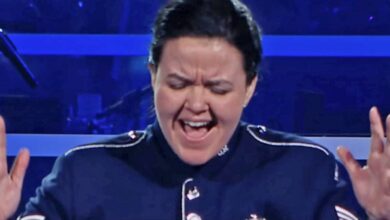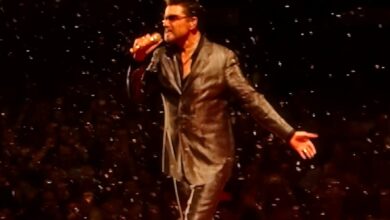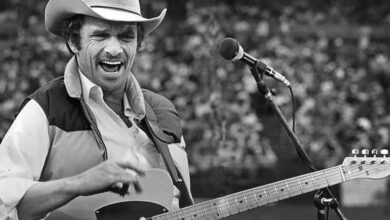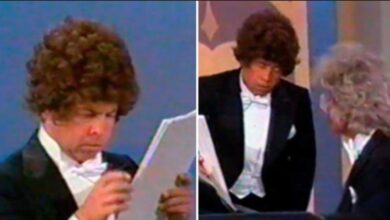Harvey Korman Nearly Fell Apart as Tim Conway Transformed the Slowest Sheriff Imaginable into Comedy Perfection, Sending the Outlaw into Fits of Laughter and Stretching Every Step, Stare, and Pause into Side-Splitting Brilliance Until the Whole Saloon and Studio Audience Were Crying with Laughter — a Moment That Reminds Us Exactly Why the Enduring Genius of The Carol Burnett Show Is Still Missed Today
Tim Conway and Harvey Korman Revive the Golden Age of Comedy in “The Old Sheriff”
On a night filled with nostalgia for classic television, viewers were transported back to an era when comedy thrived on instinct rather than elaborate staging. During this unforgettable sketch from The Carol Burnett Show, Tim Conway stepped into the role of the “slowest sheriff in the West,” while Harvey Korman played a jittery bank robber trying to survive the sheriff’s impossibly delayed reactions. Instead of relying on complex jokes, the humor blossomed from Conway’s deliberate pacing and Korman’s intensifying desperation, creating a comedic storm unlike anything modern audiences often see today.
A Masterclass in Comic Timing
The sketch begins in a humble Old West saloon, complete with swinging doors and quiet background piano, setting the mood for Conway’s unhurried entrance. Moving so slowly that even shadows seemed to outpace him, he transformed every small action into a dramatic moment. Meanwhile, Korman’s robber character kept urging the scene forward, only to be met with even slower responses. This imbalance between urgency and lethargy delivered a rhythm of humor that grew funnier with each passing second as the audience recognized the brilliance in Conway’s restraint.
What makes the sketch especially remarkable is Conway’s ability to convert ordinary gestures into comedic highlights. A minor misstep, a faint grimace, or a delayed hat adjustment became laugh-worthy events under his control. Korman, trying to maintain composure, found himself battling to deliver his lines while suppressing laughter that continually tried to burst forth. Each request he made for the sheriff to speed things up only caused Conway to exaggerate his slowness more outrageously, amplifying the comedic tension between them until the room erupted with unstoppable laughter.
Comedy Chaos, Perfectly Controlled
As the story progressed, the performance reached a point where the entire stage felt like it was vibrating with laughter. Conway’s character remained serenely slow, even as Korman’s robber nearly collapsed in hysterics, struggling to keep his composure long enough to deliver his next line. The magic lay in the contrast: one man moving at glacial speed with total commitment, the other desperately attempting to maintain control before completely surrendering to the absurdity of it all. The audience, fully swept into the chaos, responded with roars of laughter that grew louder with each beat.
By the finale, Conway’s dignified stillness had become the anchor of the sketch, while Korman’s barely-contained laughter became its vibrant heartbeat. When Conway eventually tipped his hat and drifted offstage as though floating in slow motion, the audience erupted into waves of applause. It wasn’t just a reaction to the scene ending—it was appreciation for witnessing comedic artistry executed with flawless precision. The simplicity of the moment proved how timeless humor can be when crafted by two performers who understand both their craft and each other on the deepest comedic level.
“The Old Sheriff” endures as a brilliant example of how comedy can transcend scripts and rely instead on human presence and chemistry. The sketch thrives on Conway’s intentional pacing, Korman’s near-explosive reactions, and the live crowd feeding energy back to the performers. Scenes like this remind viewers that true comedy doesn’t need flashy tricks—it needs performers willing to trust silence, tension, and timing. Together, Conway and Korman forged a moment that became an instant classic through nothing more than shared instinct and pure comedic joy.
If you ever need a reminder of how effective simple humor can be, revisit this sketch and watch as Conway milks every second of stillness for maximum impact. Notice how Korman’s attempts to remain professional crumble into uncontrollable laughter. Feel the room lean forward, anticipating how long Conway will drag out a single moment. In that tiny saloon, two comedic geniuses turned an ordinary setting into a legendary moment of laughter that continues to charm audiences decades later.
The enduring appeal of this sketch lies in its authenticity. There’s no sense of forced humor or rehearsed artificiality; instead, the comedy arises naturally from the performers’ rapport. Conway’s unpredictable slowness forces Korman into a vulnerable, unscripted reaction that becomes part of the entertainment itself. This interplay demonstrates how comedy rarely needs to be polished—it thrives most when spontaneity leads the way, and laughter becomes a shared experience rather than a manufactured outcome.
Another reason the sketch resonates so deeply is the physicality on display. Conway’s expert use of body language transforms the simplest tasks into captivating centerpieces. Audiences don’t just watch him move slowly; they feel the weight of his pauses, the exaggerated caution in his motions, and the comedic tension in every delayed reaction. Meanwhile, Korman’s expressive face shifts through panic, irritation, and uncontrollable amusement, serving as the perfect counterbalance to Conway’s unwavering deadpan demeanor.
The chemistry between Conway and Korman serves as the backbone of the entire routine. Their long history of working together allowed them to sense each other’s rhythms instinctively. Conway knew precisely how far he could push his antics, while Korman understood that his own breaking point would heighten the humor. This nuanced interplay elevated the sketch beyond simple slapstick and into the realm of comedic mastery that continues to be studied and admired.
Watching the sketch now, one can’t help but appreciate how rare such moments have become in the age of overly produced comedy. Instead of relying on fast-paced punchlines or digital effects, the humor stems from real-time connection—between the actors, the audience, and the moment unfolding on stage. Conway’s slow-motion performance invites viewers to savor every second, and Korman’s unraveling composure reinforces that laughter is often at its best when it’s least expected.
As generations rediscover “The Old Sheriff,” the sketch remains a testament to the power of comedic simplicity. Its charm lies in how accessible and universal the humor is—anyone can appreciate the absurdity of an impatient outlaw dealing with the world’s slowest lawman. The sketch asks for nothing more than attention and rewards it with joyful, full-bodied laughter that feels as refreshing today as it did when it first aired on television.
Ultimately, this classic moment reveals just how much brilliance can emerge from slowing things down. Conway’s exaggerated patience teaches us that comedy doesn’t always require speed or shock—sometimes, the most memorable laughs come from stretching a moment until it becomes impossible not to break. And watching Harvey Korman lose his composure is a gift in itself, a reminder of how contagious genuine laughter can be when shared between performers and their audience.






